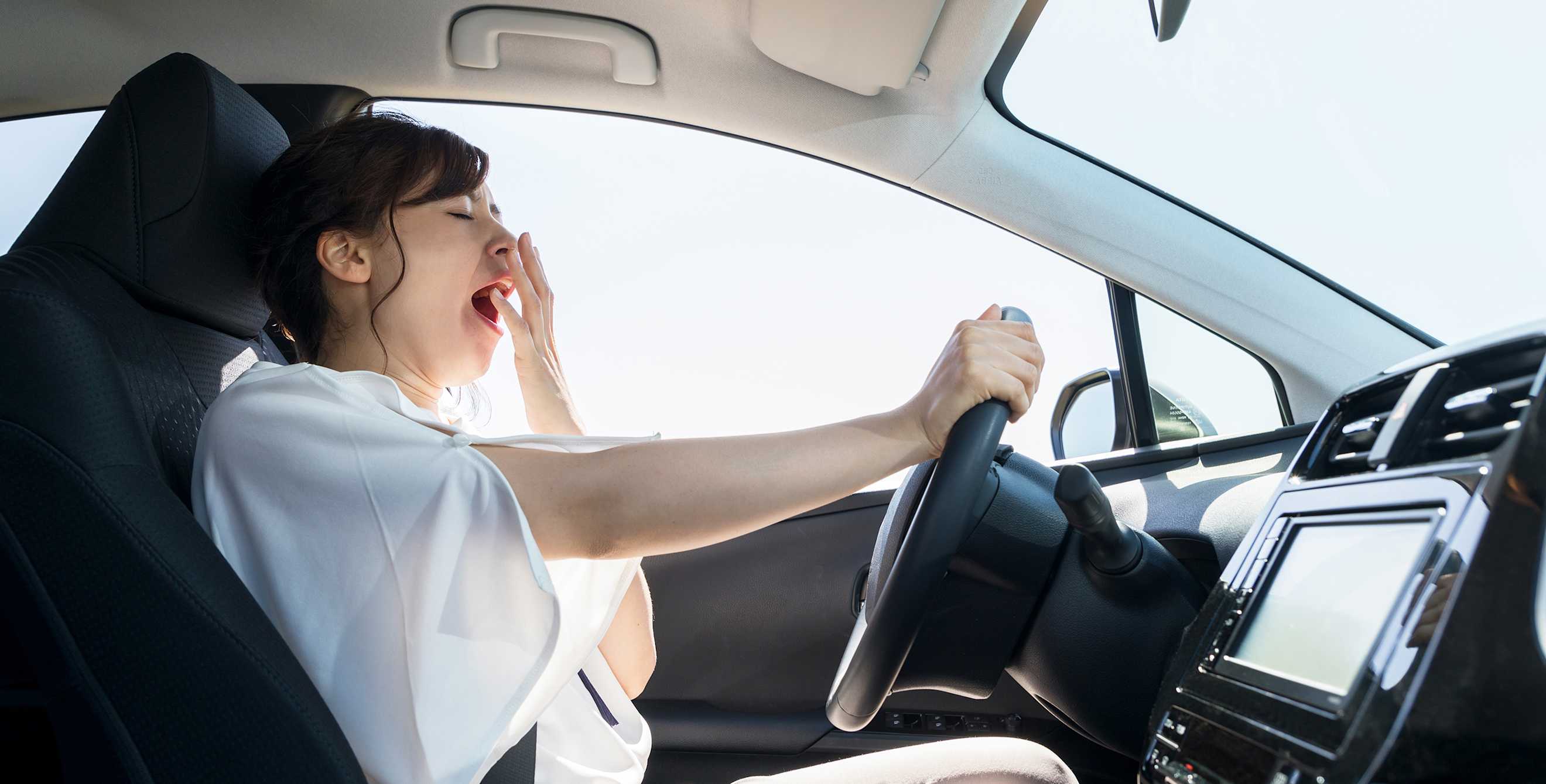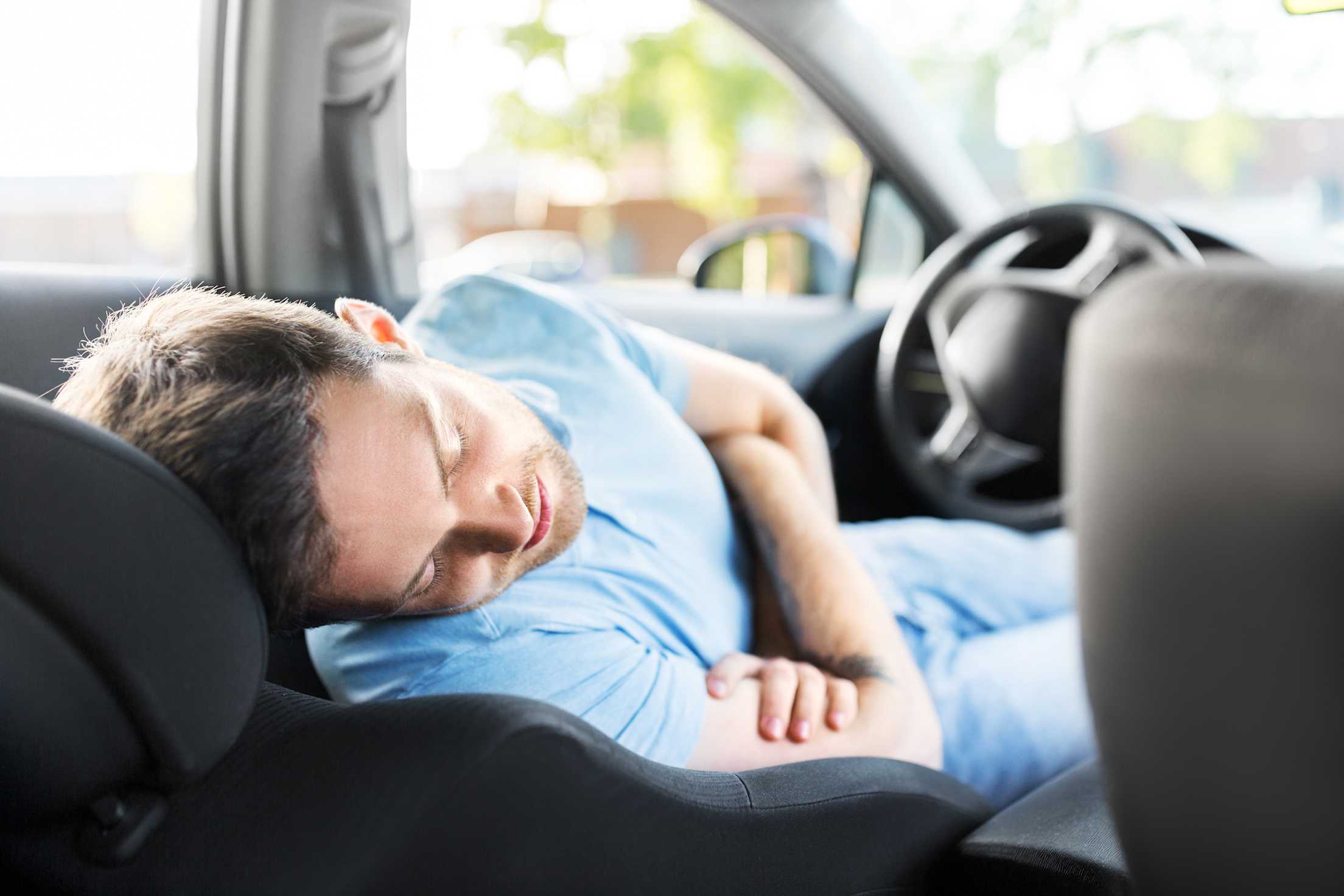
Drowsy Driving is as Dangerous as Drunk Driving
Being tired behind the wheel can increase your risk of a crash.

Most drivers would never drink and drive, yet many push through when their eyelids begin to droop—despite the action being just as perilous.
“Drowsy driving is a bigger traffic safety issue than federal estimates show,” says David Yang, executive director for the AAA Foundation for Traffic Safety. “Drivers who don’t get enough sleep are putting everyone on the road at risk.”
The difficulty in detecting fatigue following a crash makes drowsy driving one of the most underreported traffic safety issues. A 2018 study by the AAA Foundation for Traffic Safety found that the percentage of crashes involving drowsiness is nearly eight times higher than federal estimates indicate based on in-vehicle dashcam video of everyday drivers. Of the 700 crashes analyzed, the researchers determined that 9.5 percent of all crashes and 10.8 percent of crashes resulting in significant property damage involved drowsiness.
The impact is significant: One third of crashes involving a drowsy driver result in injuries, and more than 17 percent of fatal crashes involve driver fatigue, according to the AAA Foundation for Traffic Safety.

Utilize rest stops on long drives.
How to Prevent Drowsy Driving
While the obvious solution to preventing drowsy driving is to never drive when you’re tired, there are other things you can do to stay alert behind the wheel.
1. Get more sleep.
Good sleep habits affect every area of your life, including your ability to drive safely. While certain drivers (particularly shift workers, commercial drivers, and those with sleep disorders) are more at risk of drowsy driving than others, anyone who simply has not had enough sleep when they get behind the wheel is putting themselves—and others—in danger.
If you know you’ll be driving, make sure you get plenty of rest before you get behind the wheel. The National Sleep Foundation and the Centers for Disease Control and Prevention recommend that healthy adults get between seven and nine hours of sleep each night, and yet more than 40 percent of drivers have at least one or more days when they get less than six hours of sleep in a typical week, according to the National Safety Council.
2. Watch for signs of tiredness.
Despite the fact that the majority of motorists view drowsy driving as a serious or somewhat serious threat to their safety (87.9 percent) and an unacceptable behavior (95.2 percent), 3 in 10 admit to driving when they were so tired that they had a hard time keeping their eyes open.
Even if you’re feeling chipper when you start out, monitor your behavior and energy as you drive. Are you yawning, nodding off, or having trouble keeping your head up? Maybe you’re drifting in and out of your lane, missing signals, or having trouble maintaining a consistent speed. These are signs that you’re tired and at risk.

Over-the-counter and prescription medications can impact your ability to drive.
3. Check your medications.
Medications, both prescription and over-the-counter, can contribute to drowsiness. Not sure if driving is contraindicated? Ask your doctor or pharmacist about any medications you take and their possible effects on driving. Something as common as your daily allergy medication can impair your ability to drive.
4. Plan ahead.
If you travel with a co-driver, you can switch when one of you becomes sleepy. On trips of more than 100 miles or over two hours, schedule a break. Avoid driving very late at night or early in the morning. And if you feel tired, pull over and rest for at least thirty minutes. Caffeine can help, but keep in mind that it takes at least 30 minutes to take effect, so if your rest stop is a coffee or tea break, give yourself the full 30 minutes to ensure you feel fully awake before getting back on the road.
5. Pull over.
Fatigue impacts reaction time, judgment, and vision, causing people who are very tired to behave in similar ways to those who are drunk. Turning up the radio or opening the window is not enough to mitigate the risk. Stop driving if you become drowsy because you could fall asleep at any moment.